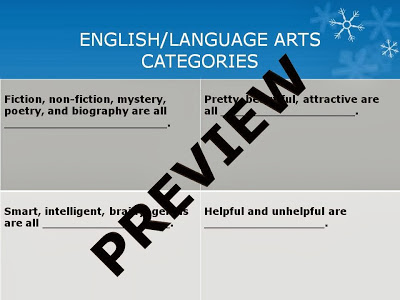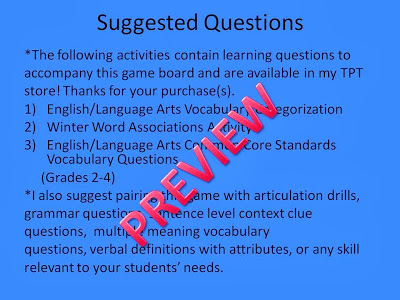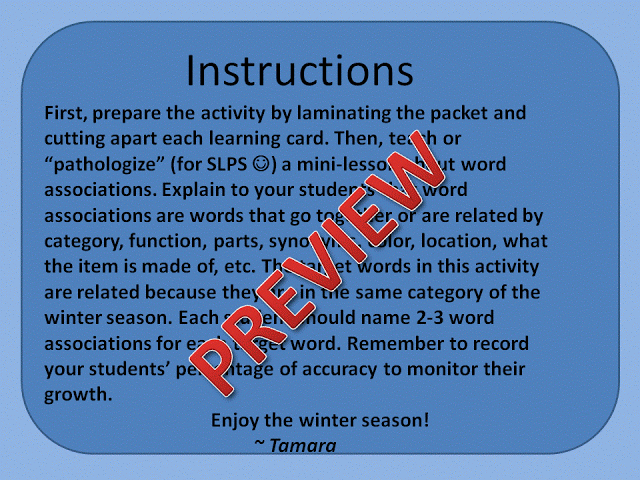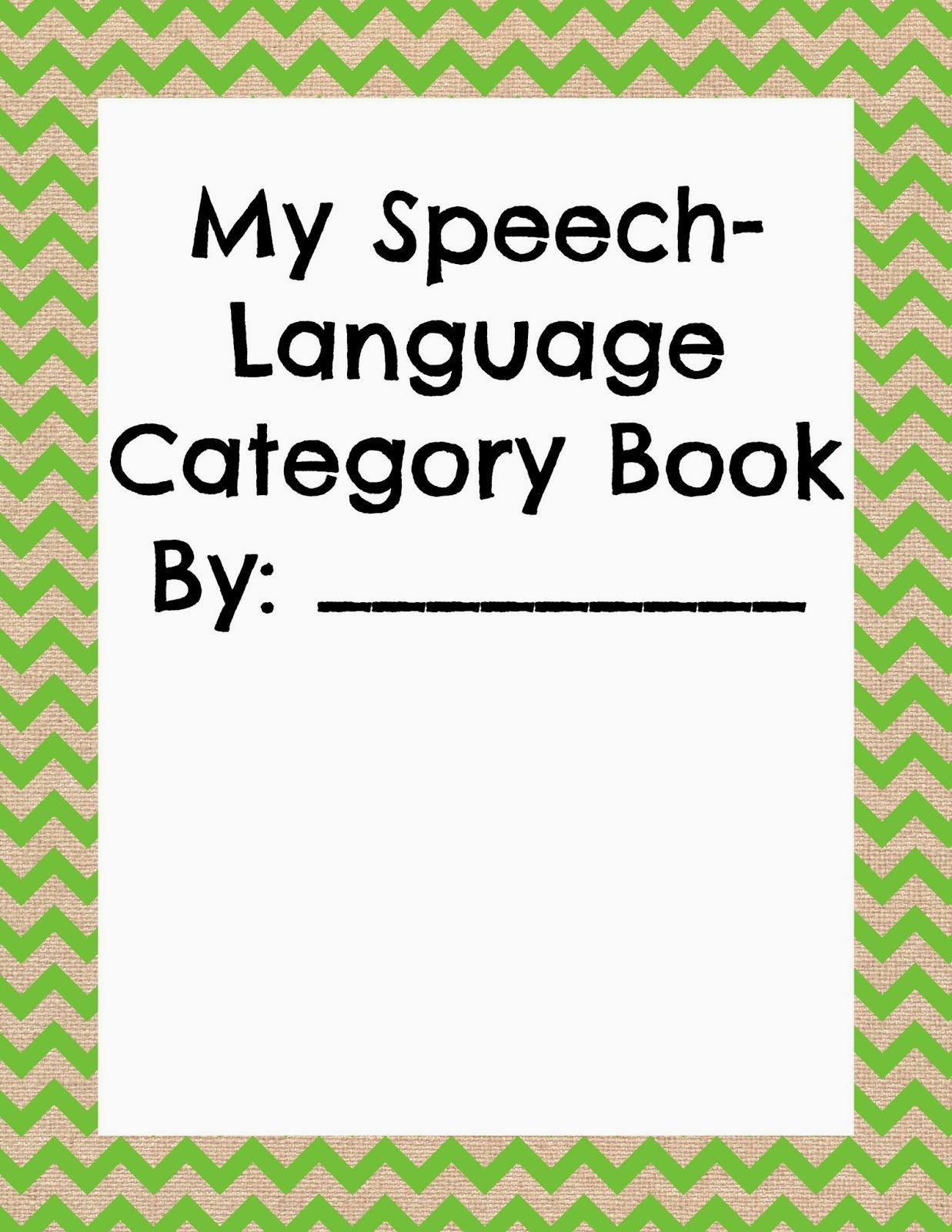
Categorization Bundle Activity # 5: Speech-Language and Language Arts Category Book
Here is a preview of the last activity in my English/Language Arts Comprehensive Categorization packet. This resource is perfect for use by speech-language pathologists or teachers to instruct students on English/Language Arts Common Core Standards vocabulary words. The category book is designed for use with students in grades 3-5. However, this is also a good review for 6th grade students in middle school.
I suggest laminating a copy of the book to use during whole group instruction and attaching velcro to affix words in the correct categories. The SLP or teacher should first complete a mini lesson by explaining the meanings of the category names and providing examples. Then the teacher should show students how to classify the terms into the different categories in the book. After the students understand the instructions, the SLP or teacher may distribute the individual book seen below for them to complete individually or with assistance. Depending on the students’ language processing skills, this activity may need to be addressed over more than one speech language therapy session.
This book includes 11 vocabulary categories such as parts of speech, types of literature, parts of sentences, types of sentences, synonyms, antonyms, multiple meaning words, story vocabulary, figurative language, text features, and types of writing. Students need to cut out the 14 groups of vocabulary words provided and sort them in the correct groups. Three groups will need to be sorted into a previously used category. Next the SLP or teacher should check students work for accuracy and then have them glue the words in their book.
So you may think, what is the significance of teaching this skill? Students need to learn ways to effectively organize and input academic content into their brains so they can easily retrieve the information. Direct instruction in categorization will enable students with and without language disorders as well as language based learning disabilities to improve their receptive vocabulary knowledge. Additionally, this resource may contribute to improving their short term, working memory, and long term memory skills.
You may purchase this resource from my TPT store in the comprehensive bundle by clicking here:
http://www.teacherspayteachers.com/Product/ELA-Comprehensive-Categorization-Bundle-1111028
or individually:
http://www.teacherspayteachers.com/Product/Speech-Language-and-Language-Arts-Category-Book-1110677
Thanks for visiting the blog today.
Tamara Anderson, E.d.S., CCC-SLP
Speech Language Pathologist
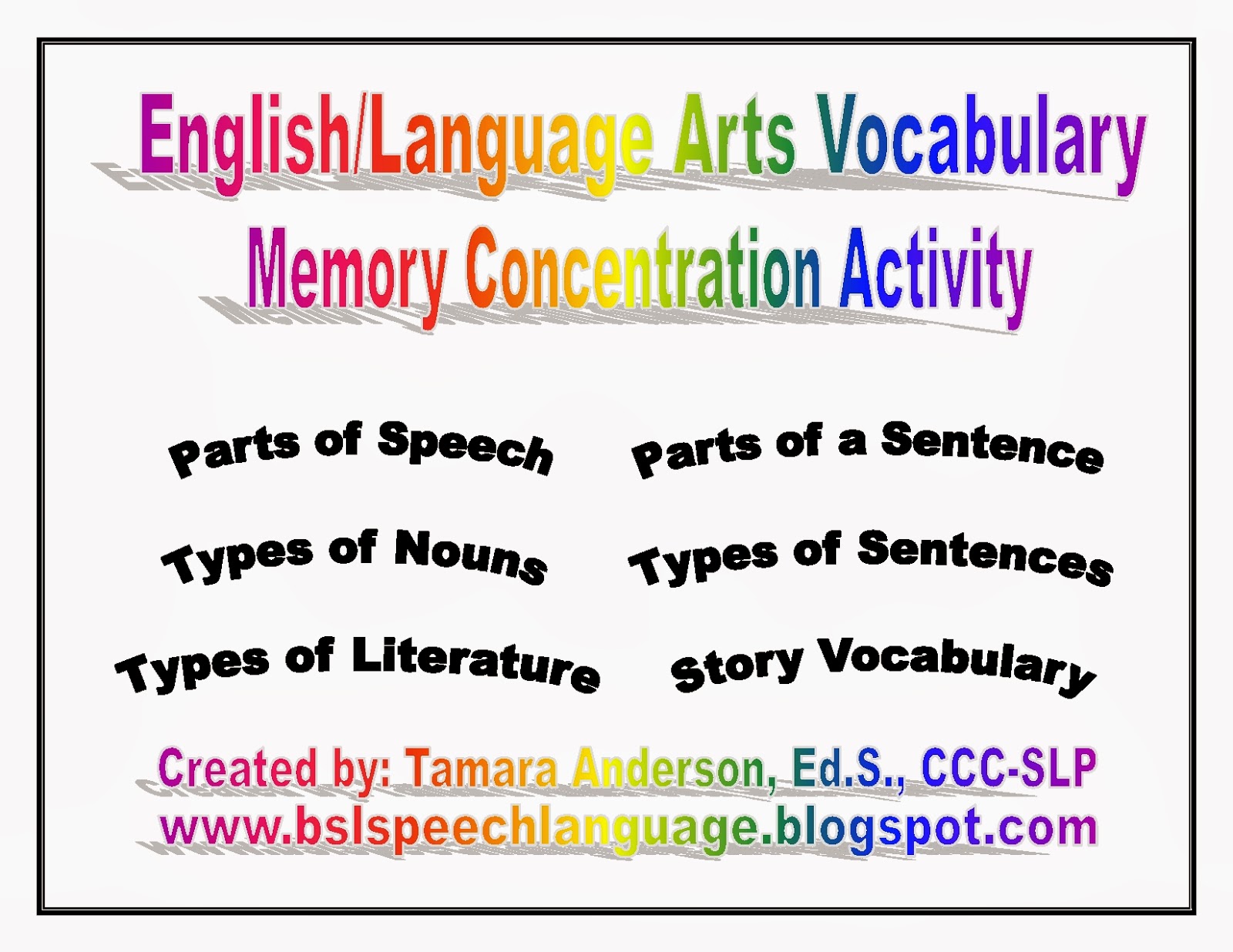
Categorization Bundle Activity # 4- English/Language Arts Vocabulary Memory Activity
Hey there. I hope everyone had a great weekend and remembered to spring forward due to the time change. As I think about the beginning of another work week tomorrow, I can’t help but reflect on my lovely students with speech language disorders. Many of them also have co-occurring specific learning disability in the area of language. Additionally, several of them struggle with remembering academic content either because they did not understand it when it was taught or their brain struggles to effectively encode the information.
I created a English/Language Arts Vocabulary Memory Activity that will give students practice with increasing their short term, working memory, long term memory, as well as their receptive academic vocabulary knowledge of common core standards related terms. Vocabulary and memory skills are essential for listening and reading comprehension as well as mastery of academic content. This is a great activity for use during speech-language therapy, Language Arts centers, or as a differentiated instruction activity. Speech-language pathologists or teachers may make multiple sets as needed for students to use during small group or independent practice. Here is a preview:
To play the memory game, students will take turns identifying matches of the English/Language Arts vocabulary according to the category and associated vocabulary listed. If playing in a group, the student gets an extra turn if he or she selects a matching pair. There are 21 matches and the player with the most matches is the winner of the game. I recommend dividing the word cards into 2 sets initially so that the students are striving to identify 10 or 11 matches.
This activity is available for purchase in my TPT store as part of my ELA Comprehensive Categorization Bundle or individually. Check out the links below to view items:
http://www.teacherspayteachers.com/Product/ELA-Comprehensive-Categorization-Bundle-1111028
I appreciate your support. Have a great week!
Tamara Anderson, M.S., CCC-SLP
Speech-Language Pathologist

Categorization Bundle Activity # 3- English/Language Arts Vocabulary Categorization Cards
The third activity in my English/Language Arts Vocabulary Categorization bundle are task cards. There are two levels of tasks cards that cover Tier I (everyday vocabulary words) and Tier III (E/LA words). Students have to complete sentences with the correct Tier I or Tier III term. The first level targets questions for students in grades K-2 and the second level targets questions for students primarily in grades 3-5. However, I also suggest using Tier I words with upper grades students as a warm up activity prior to them learning to name vocabulary words in the Tier III English/Language Arts categories.
Over the years, I have observed first hand that students with language disorders have difficulties processing verbal/written information, organizing information, remembering content, and expressing information. When speech-language pathologists or teachers provide them direct instruction in the area of categorization, it addresses all these skills in one activity.
These categorization task cards are an ideal way to address vocabulary as well as the skills mentioned above. Here is a preview of the two levels of tasks cards provided.
This speech language therapy and educational resource is available for purchase in my TPT store. Just click on the link here:
http://www.teacherspayteachers.com/Product/EnglishLanguage-Arts-Vocabulary-Categorization-Cards-1109465
Have a great week!
Tamara Anderson, Ed.S., CCC-SLP
Speech Language Pathologist

Categorization Bundle Activities # 1 and # 2
Here is a preview of activity # 1 and activity # 2 in the English/Language Arts Categorization Bundle. It includes vocabulary sorting activities for students in grades 1-2 and grades 3-5.
There are 8 categories of terms for students to practice in grades 1-2. I typically give them 4 categories first: compound words, homophones, punctuation marks, and prepositions. I put the blank matching sheets on the table. Then, I instruct students to sort the terms into the corresponding groups and take baseline or pre-assessment data of their accuracy. I later teach a mini-lesson about those 4 categories of words and then give the students time to practice classifying them.
Here is an example of the words that I cut apart for the students to sort and place on the blank sheet above.
Thanks for visiting my blog today. If you have any further questions about this product, email me at [email protected]
Tamara Anderson, Ed.S., CCC-SLP
Speech Language Pathologist

Pediatric Language Disorders
I enjoy providing interventions for children who have language disorders. Children with communication impairments may receive a diagnosis of receptive language disorder, expressive language disorder, or mixed receptive/expressive language disorder due to significant language challenges. Toddlers may experience delays in their language development that may be identified as a language disorder by the time they are in preschool. Other children may not be identified with a language disorder until they are attending elementary school. However, it is important to seek an evaluation by a speech-language pathologist if a parent, pediatrician, teacher, or guardian has concerns about a child’s language development. Children need to be provided access to speech language therapy services as soon as possible to optimize their ability to attain language skills that are lacking.
The majority of students on my caseload that I provide speech-language services for have language disorders that impact their ability to understand information and communicate their ideas clearly. This directly impacts their ability to learn and explain the academic curriculum at their grade level. Therefore, school aged children with language disorders require intervention from a speech language pathologist to foster growth in their area of need. Many of these students are also identified with a language based learning disability and receive literacy support in reading and writing instruction from a special education resource teacher.
Children with a receptive language disorder have difficulties with both listening and reading comprehension. They struggle with processing information that they hear or read in order to make meaning of the message that is being communicated. They benefit from short concise oral directions so that they can better understand language until they improve their ability to understand verbal directions. Students with receptive language difficulties need direct instruction in the areas of vocabulary such as basic concepts (e.g. sequential terms- first, spatial- prepositions, temporal- before/after, qualitative-adjectives), multiple meaning words, synonyms, antonyms, parts of speech terms (e.g. nouns, pronouns, verbs) and use of context clues to decipher the meanings of unknown words. They also need to improve their ability to comprehend and answer literal who, what, where, and when questions and inferential why and how questions. Additionally, children with receptive language disorders need to learn critical thinking skills essential to analyze language concepts such as compare/contrast, cause/effect, problem/solution, fact/opinion, drawing conclusions/inferences etc.
There are so many language areas that a speech-language therapist provides interventions for children. Many of these areas relate directly to the English/Language Arts curriculum standards in the school setting that are also reinforced by a child’s classroom teacher. However, the speech-language therapist provides specialized individualized or small group instruction while breaking down a skill in a manner that allows a child to adequately process and learn the information that is being taught.
Children with an expressive language disorder have significant challenges verbally communicating their thoughts. They may struggle with forming a complete sentence to express their basic wants or needs, retelling a fiction story, summarizing facts from nonfiction material, explaining the meanings of vocabulary, using correct grammar at the word level (e.g. using plural nouns, irregular past tense verbs), or using correct grammar at the sentence level.
Children with Autism Spectrum Disorders typically have coexisting pragmatic language disorder. This means that they do not know how to independently use language in social settings. They are unable to read social cues about an appropriate time to start a conversation with a peer or adult, make comments related to the topic of conversation, or ask questions in conversation. Many children with autism who are able to communicate verbally talk about their areas of interest only and do not know how to consider another person’s perspective or area of interest in conversation. They only identify with language from their vantage point as they prefer to remain in their social world. A Speech-language pathologist provides direct instruction in pragmatic language so that these children can improve their abilities to begin conversations with others, make comments, take turns in conversation, etc.
This is Pediatric Language Disorders 101. Language skills are essential for children to understand and explain information. Children who have a disability in this area need intervention support from both a speech language pathologist and special education teacher to improve their language skills. Parents definitely can also participate in their children’s development by providing opportunities for them to engage in language activities at home and on family outings in the community. Language is everywhere!!! Everyday is an opportunity to promote increasing the receptive and expressive language skills for children. This sets them on the path of building a successful life.
Parents and professionals who would like more information on this topic may visit the American Speech Language Hearing Association (ASHA) resource page: http://www.asha.org/public/speech/
Have a great week!
Tamara Anderson, Ed.S., CCC-SLP



Winter Land: English/Language Arts Activities
Hello there. I hope everyone had a great weekend. I had a nice weekend and was able to spend time with my precious niece that was born last Monday. I also had time to finalize my newest speech-language therapy/educational resource: Winter Land: English/Language Arts (ELA)Activities that is available in my TPT online store here: http://www.teacherspayteachers.com/Product/Winter-Land-EnglishLanguage-Arts-Activities-1057356
There are two levels of English/Language Arts vocabulary categorization cards included in this activity. The first is the basic level that targets Tier I or everyday vocabulary words. The second is Tier III or ELA curriculum specific vocabulary words that students are required to learn in elementary school such as types of sentences, parts of speech, and types of literature. There are a total of 32 vocabulary questions cards included.
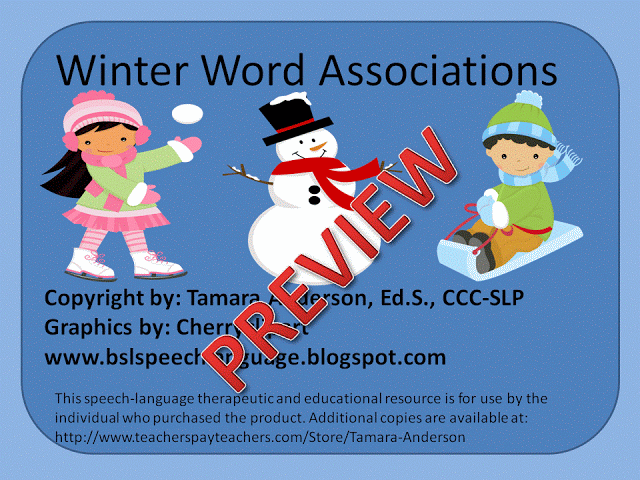
Winter Word Associations
I cannot believe that December 2013 is already here. I still remember celebrating on New Year’s Eve and beginning my year quest of writing down experiences that I am grateful for. I have slacked off on recording those lately though and need to write down a few more things!

Fall Snapshots in the Speech Language Therapy Room
This fall season, I created a game board to use with a multiple meanings (homographs) vocabulary lesson and it was an instant hit in my therapy room. My students have asked to play this game repeatedly over the past several weeks. I used the game board included in my multiple meanings unit and cut out the individual pictures to create a larger board.
I used this with the multiple choice questions in my language unit as well as a variety of other speech-language questions to target the specific skills that my groups needed to practice. My students took turns answering questions and rolling the dice to move along the game board. Here is a snapshot of 18 out of 30 questions included in this part of the unit.
Here is a snapshot of the multiple meanings mats that my students used to match vocabulary cards with the correct definitions. I modified this game by placing all the matching mats on the table and then my students took turns selecting a word and searched for the correct definition to place the card on. My students enjoyed playing this as a scavenger hunt activity as they had to take their time to skillfully read the definitions on various mats to find the correct match. I assisted them with orally decoding words that were
difficult for them. I was pleased to see my students improve their independence
with this activity after the initial time implemented in a language therapy
session.
You can find this resource here in my TPT store available for purchase: http://www.teacherspayteachers.com/Product/Fall-Themed-Multiple-Meanings-Vocabulary-Homographs-919412
Thanks for visiting my blog today,
Tamara

Back to School Activities in Speech Language Therapy
It has been almost one month since school has started in the school district where I work. I have gotten to know my new students, heard summer stories from my returning students, and managed to take baseline data on many of their IEP goals.
The majority of my caseload are students who have receptive and expressive language disorders. I used a variety of resources and activities to collect beginning of the year or baseline assessment data on specific skills related to their IEP objectives.
For example, I used my Back to School-Synonyms & Antonyms, Back to School- Irregular Plural Nouns & Irregular Past Tense Verbs, and my Back to School Word Associations activity packets to gather information on vocabulary and grammar language targets.
I also used my Beach Themed Monster Truck Activity- Synonyms & Antonyms, Beach Themed Multiple Meanings Memory Activity, and Basic Concepts Baseline Data & Progress Check Activity to gather information from other students as well.
These activities are all available in my online store here: http://www.teacherspayteachers.com/Product/Back-to-School-Baseline-Check-Irregular-Plural-Nouns-Past-Tense-Verbs-831665
Other favorite resources that I used were the Quick Take Along Mini-book Series by Super Duper to elicit students’ knowledge of vocabulary and grammar concepts. You can get more info on these resources here: http://www.superduperinc.com/products/view.aspx?pid=TA230&s=vocabulary-quick-take-along-#.UiSrQxusiSo

Summer Freebie!!!
I hope everyone is enjoying their summer. I am having a great time. I have done some traveling and decided to create another beach themed language activity. One of the best parts of this activity is that it’s a freebie that is available in my Teachers Pay Teachers (TPT) online store. I know that we all work so hard throughout the school year and also in private practice with our students and clients. I want to reward you all with an activity that will be useful and visually appealing.
One of my favorite places to visit during the summer is Ormond Beach, Florida that is located on the east coast, a little north of Daytona Beach and south of Flagler Beach. While there, I saw a caravan of “Monster Trucks” and decided to capture the moment. I thought, “wow, my boy students would love to see these photographs!!” Hence, I created Beach Themed Monster Trucks-Synonyms & Antonyms to target comprehension and verbal expression of the specific vocabulary listed. As you other speech-language pathologists know, direct vocabulary instruction is essential for our students with language disorders who struggle with developing their vocabulary. They require a lot of drill and repetition as well as naturalistic ways to practice identifying and communicating key vocabulary words. Addressing vocabulary in speech-language therapy or language arts/literacy lessons is critical to increasing students’ communication, language, and overall academic development.
You can check out more details about this product at:
http://www.teacherspayteachers.com/Product/Beach-Themed-Monster-Trucks-Synonyms-Antonyms-774872
Enjoy the remainder of the summer!! I have exactly 1 week left before I return to work full-time! I can not believe my summer break is coming to an end.
Tamara Anderson
SLP on Summer Break!!


















































